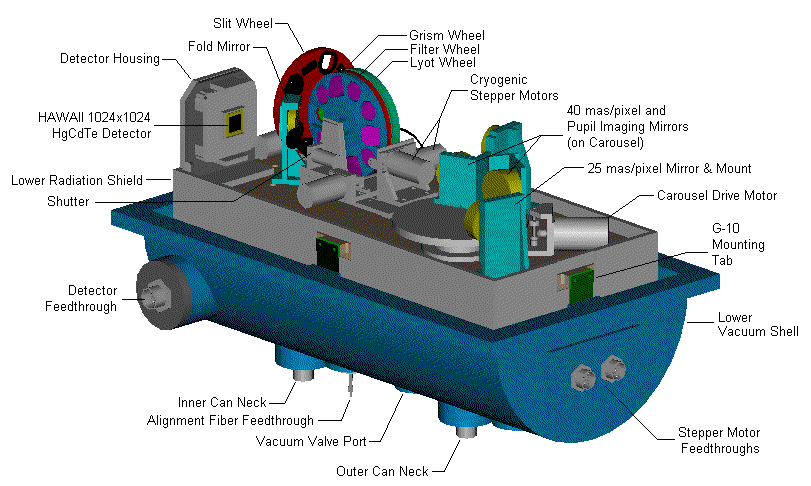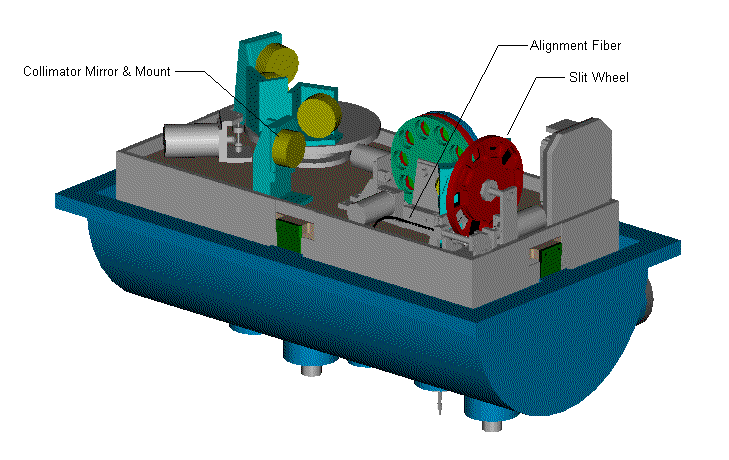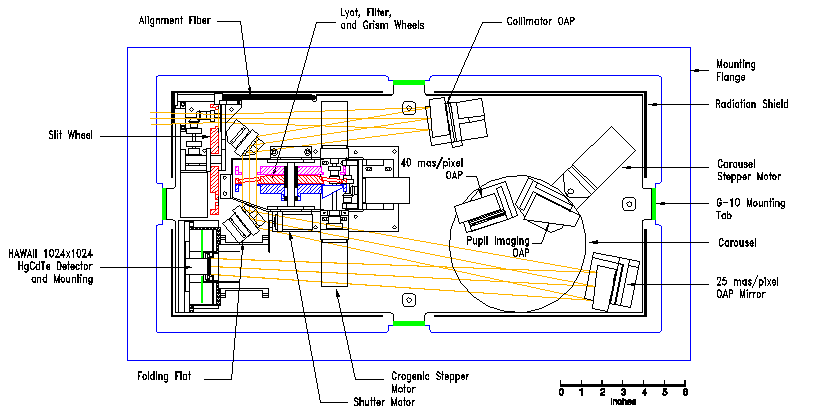
| |
This is the PHARO dewar on its handling cart.
Inside the aluminum outer shell is the main workplate on which the
optics and detector are mounted, and a system of liquid nitrogen tanks
and radiation shields that keep these components cooled to 77 Kelvin.
The necks for the tanks, the vacuum pump-out valve, and other ports
can be seen extending from the bottom of the dewar. Light enters
through the window on the right end of the dewar (covered in this
view), and the dewar is mounted on the telescope via three stainless
steel pins, one of which is visible on the front face of the dewar.
|

| |
A side view of the opened instrument showing
the optics, filter and slit wheels, cryogenic stepper motors, and
detector housing. The system of light baffles has not yet been
installed.
|

| |
An end view showing the slit wheel on the
left and the detector housing on the right. Near the back of the
dewar two gold-coated OAP mirrors can be seen.
|

| |
The 1024x1024 pixel HgCdTe HAWAII detector mounted
on its fan-out board.
|

| |
PHARO mounted on the JPL Adaptive Optics System
optical bench at Palomar. The Adaptive Optics are enclosed by the
black cover. Mounted on the PHARO dewar are the detector and
stepper motor electronics boxes.
|

| |
A view from directly underneath the 200-inch
telescope, looking up at the AO System and PHARO mounted at the
f/16 Cassegrain focus. The doors of the AO system's protective cover
are open, exposing the internal optics. The wavefront sensor assembly
is visible at the bottom of the opening; the two off-axis paraboloid
(OAP) mirrors are housed in the blue mounts at upper right, and the
349-element deformable mirror is the black box just below the
OAP's.
|





